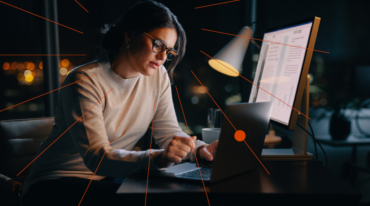As Donald Trump assumes the presidency again, global trade professionals are confronted with a complex and uncertain landscape. Trump’s past policies and rhetoric suggest significant changes in the global trade environment, which could have far-reaching implications for international markets and economies. This blog explores the potential impacts of the new presidency on global trade, the role of trade professionals in this evolving scenario, and key areas of focus including the De Minimis rule, Most-Favored-Nation (MFN) status, export controls, and investment restrictions.
Economic policies and global trade dynamics
Trump’s economic policies, characterized by increased U.S. spending and tax cuts, could lead to a higher U.S. debt, potentially increasing inflation and prompting restrictive monetary policy responses. Such fiscal policies may alter trade dynamics, affecting import and export patterns. Trade professionals must monitor these economic indicators to anticipate changes in trade flows and adjust strategies accordingly.
U.S.-China trade relations under a Trump presidency
Most-Favored-Nation (MFN) status
Under the MFN principle, countries agree to treat each other equally in terms of trade tariffs and barriers. During Trump’s previous term, the U.S.-China trade relationship was strained, with tariffs imposed on Chinese goods. If Trump pursues a similar approach, it could lead to increased tariffs and trade barriers. This might affect China’s MFN status, influencing global trade dynamics.
Export controls and investment restrictions
The U.S. has been increasingly focusing on export controls, especially concerning specific commodities and technology sectors, to address national security concerns. Restrictions on technology exports to China could impact industries like semiconductors and telecommunications. Additionally, investment restrictions may limit Chinese investments in U.S. companies, affecting bilateral trade relations. Trade professionals must navigate these complexities by ensuring compliance and exploring alternative markets.
Decoupling vs. de-risking
Decoupling, or reducing economic dependence on China, has gained traction. However, a more balanced ” de-risking ” approach aims to mitigate risks without severing ties completely. Trade professionals should evaluate the benefits and drawbacks of these strategies, focusing on diversifying supply chains and markets to enhance resilience.
De Minimis rule
The De Minimis rule, which exempts low-value shipments from tariffs and taxes, is crucial in global trade. Changes in the U.S. De Minimis threshold could impact international e-commerce and trade flows. Professionals must stay informed about policy shifts and adapt strategies to optimize supply chain efficiency and compliance.
Implications for emerging markets and central banks
Emerging markets relying on dollar funding may face increased borrowing costs due to potential U.S. interest rate hikes. This, coupled with reduced exports, could strain their economies. Trade professionals should develop strategies to manage financial risks and explore alternative funding sources. Central banks worldwide may adjust policies to counteract U.S. trade measures, influencing currency values and trade relationships.
Opportunities and challenges for global trade professionals under a Trump presidency
In this evolving landscape, trade professionals play a crucial role in navigating challenges and seizing opportunities. Key areas of focus include:
- Scenario planning and risk management
Conducting thorough scenario planning is essential to assess potential risks and opportunities associated with Trump’s policies. By analyzing different scenarios, businesses can develop contingency plans to mitigate disruptions and capitalize on emerging opportunities.
2. Diversification of markets and supply chains
With potential trade barriers and tariffs, diversification becomes essential. Trade professionals can explore new markets and diversify supply chains to reduce dependency on specific regions, ensuring resilience in the face of geopolitical uncertainties.
3. Compliance and regulatory expertise
As trade policies evolve, compliance with international trade laws and regulations becomes paramount. Trade professionals must stay updated on changes in trade agreements and compliance requirements to ensure seamless operations and avoid potential penalties.
4. Collaboration and networking
Building strong relationships with international partners and stakeholders is crucial. Trade professionals can leverage their networks to gather insights, share best practices, and collaborate on strategies to navigate the complexities of global trade.
 |
|
In conclusion, the new Trump presidency and the U.S. presidential election will have significant implications for U.S. trade policy and international supply chains. Companies should conduct scenario planning to assess the potential risks and opportunities associated with the incoming President’s approach and plan accordingly.
As the global trade landscape continues to evolve, it’s more important than ever to stay ahead of the curve. To navigate these changes with confidence, consider exploring the latest innovations in global trade management software. By simplifying your entire global trade management process with trade compliance information and facilitation tools, you can automate routine tasks, gain compliance confidence, and save time.
 |
|








